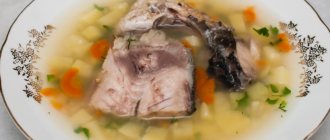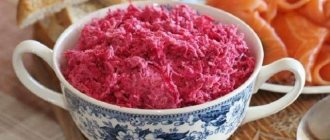At all times, green onions were considered a very useful product, a storehouse of vitamins. Green feathers were eaten like this: added to salads, soups and other dishes. They first started talking about him in Iran and Afghanistan. Feathers are sprouted from different varieties of onions - onions (it lasts the longest and does not lose its benefits); onion (disinfects the body); slime onion (improves blood, rich in phytoncides); leek (has diuretic, choleretic properties, with its help you can quickly cleanse the blood); shallots (onions contain a lot of flavonoids, which reliably protect against cancer). How to use the product correctly? Can he do any harm?
Composition and calorie content
Green feathers are the best addition to salads, vinaigrettes, meat and vegetable soups, minced meat, gravy, soup, and sauce. The plant has a healing effect and helps cope with various diseases. Cosmetologists have also paid attention to onions; they use them to strengthen, renew hair follicles, and stimulate hair growth in case of hair loss.
How many calories are in green onions?
No more than 19 kcal. The product is rich in vitamin A, C, B, pyridoxine, tocopherol, choline, niacin, dietary fiber, unsaturated fatty acids. The medicinal properties of the product are explained by its rich composition - a lot of magnesium, potassium, calcium, sodium, copper, manganese, zinc, phosphorus, iron, copper. Green onions are rich in carotene, phytoncides, flavonoids, chlorophyll, and essential oil.
Benefit
In the spring, a person suffers from a lack of vitamins; green onions will come to the rescue; they will fill the deficiency with minerals and vitamins. It is green onions that are used as a prophylactic for colds; they improve the digestive process and are a reliable anti-scorbutic remedy because they contain a lot of vitamin C.
If you compare green and onions, they contain a lot of chlorophyll, and it is needed to improve blood composition; they treat iron deficiency anemia. Due to the fact that onions contain a lot of phosphorus, you can improve the condition of your teeth. It copes well with the problem and protects against various dental diseases.
Onion feathers are rich in a component such as zinc. It has a positive effect on the female reproductive system, improves the condition of the skin, hair, and nails.
Men should definitely eat green feathers, they increase testosterone levels and increase sperm activity.
It has been proven that almost all useful components are found in the white, fleshy leg; not so many of them are found in the green feathers. In order for the product to be absorbed by the body, you need to salt the vegetable a little, then mix it with vegetable oil (give preference to olive oil).
When you buy a plant, pay attention: the bulb should be white, strong, and the feathers should be dark green and bright. Don't be fooled by the size of the bow. The larger the vegetable, the less healthy it is. Also, the tips of the feathers should not be overdried; make sure that there is no mucus or white coating.
How to store green onions?
It is best to place the product in a separate container in the refrigerator. It is not recommended to store chopped onions in the refrigerator; it is best to wrap them in plastic beforehand, otherwise there will be an unpleasant smell.
How to freeze and pickle onions?
Before freezing the product, it needs to be boiled for about 5 minutes. Wait until the water begins to drain, then put it in a packaging bag and put it in the freezer. Salting the product is also easy: the green feathers are first washed, dried, then everything is put into glass jars and salted.
The difference between leeks and green onions
The two products are often confused. In fact, leeks are a separate vegetable crop, and green refers to the sprouts of onions and other types of onions. Two types of onions are grown - winter and summer. The plant has a sweetish, pleasant, delicate taste; it is a mild spice. The product can be used to restore the functioning of the liver and gall bladder. It perfectly treats gout, rheumatism, overwork.
By consuming leek, you will improve your memory, perceive information faster, and your concentration will noticeably increase. Leeks can also be consumed by pregnant women. It contains a lot of folic acid, and it protects the fetus from intrauterine pathologies.
Leek is considered an effective antimicrobial agent; it can be used to relieve inflammation and cure arthritis. It is especially important to use the product in case of cancer; leek stops the active growth of the tumor. Especially useful for prostate and ovarian cancer.
Fresh onions can be used for poor vision, as well as bronchitis, laryngitis, and colds. Keep in mind that onion phytoncides actively fight staphylococcus, streptococcus, tuberculosis, dysentery, pathogens of dangerous diseases -. Cosmetologists consider leek the best component of cleansing masks; it softens the skin and gives it elasticity.
Contraindications for green onions
Despite the fact that the product is quite useful, it is necessary to remember the contraindications - you should not eat it if you have stomach diseases. Also, if you overuse green feathers, your blood pressure may rise sharply, heart problems will arise, and it will all end in attacks of bronchial asthma.
Let's sum it up! If your body normally accepts green onions, be sure to add it to different dishes, so you will quietly enrich your body with quite useful substances and will not suffer from a lack of vitamins. Nursing mothers should use the product with caution; sometimes it changes the taste of milk, so the child may refuse to eat. Those who have problems with some internal organs should not eat green feathers, so that the disease does not worsen. The rest of us should try leeks, green onions and other healthy varieties. Bon appetit!
Parsley, dill, cilantro, fennel, basil and other greens are a source of vital microelements and vitamins. It’s easy to sow dill or parsley in the garden, in a box on the balcony or in a flower pot on the windowsill, and you will be sure that there are no unnecessary “chemicals” in the plants. When choosing herbs at the market, it is better to give preference to those grown in your region. It is enough to eat a small bunch (30-50 g) of greens a day, which includes dill, onions and parsley; its calorie content will be only 12-18 units.
Chemical composition of green onions
Green onions have been used as food since ancient Asia. Wild greens were used as a seasoning for dishes and in raw form by nomadic shepherds. Gradually the culture spread throughout the world.
Green onions are a source of vitamins, micro- and macroelements, and antioxidants. The product contains about 30 mg of ascorbic acid per 100 g, which is 50% of the daily requirement of the vitamin for an adult. Sulfur is responsible for the specific smell of onions - its amount is 24 mg.
Composition and beneficial properties of parsley
All parts of the plant have healing properties: leaves, stems, seeds and roots. Despite its low calorie content, parsley is rich in B vitamins (B1, B2, B9, B12), A, C, E, PP, iron, potassium, calcium, selenium, magnesium, zinc and iron. The carotene content is more than in carrots, and ascorbic acid is no less than in citrus fruits. The daily dose of vitamin K is contained in 10 g of fresh herbs.
This useful plant helps improve blood composition, improve intestinal function and strengthen the heart muscle. The juice is used in cosmetology to whiten skin, improve hair growth and fight dandruff.
Seeds and root vegetables contain a lot of useful inulin - a natural prebiotic that stimulates the biochemical processes of digestion. The leaves and roots contain phytoncides, pectins and flavonoids, which have anti-inflammatory, bactericidal and antioxidant effects.
Dill, whose calorie content is slightly lower than the nutritional value of parsley, contains flavonoids and essential oils, carotene and riboflavin, nicotinic and ascorbic acids. Green onions contain a lot of vitamins C, PP and carotene.
Despite all the beneficial properties and low calorie content, parsley may be contraindicated for people with diseases of the gastrointestinal tract or urinary system. Pregnant women should use parsley juice or root with caution due to its stimulating effect on uterine tone. Two or three sprigs of greenery will replenish the reserves of vitamin E, which is important for the female body during pregnancy.
Beneficial properties of green onions for the body
The benefits of the product are due to its rich chemical composition:
- vitamin B4 helps normalize sleep, improves memory, supports the structure of cell membranes, the transmission of impulses in the central nervous system, accelerates the absorption of fat, reduces inflammatory processes in the body;
- folic acid reduces symptoms of depression, improves mood, sleep and appetite;
- ascorbic acid increases the body's defenses;
- zinc improves the condition of skin, hair, nails, supports the functioning of the immune system;
- essential oils normalize digestive function, remove cholesterol from blood vessels, and lower blood pressure;
- phytoncides have an antibacterial effect and kill fungal infections;
- sulfur has an anti-inflammatory effect, prevents the development of arthritis;
- phosphorus maintains healthy dental tissue and bones;
- beta-carotene serves to prevent decreased visual acuity and the appearance of cataracts;
- fiber regulates intestinal function - improves peristalsis, relieves constipation;
- Regular consumption of green onions helps strengthen blood vessels and restore the functioning of the heart muscle thanks to calcium, potassium, magnesium, and vitamin PP;
- chromium is responsible for regulating blood sugar levels and the slow release of glucose in muscles and cells.
Specialists from the National Cancer Institute in the USA and the Shanghai Cancer Institute in China conducted studies that found that regular consumption of green onions helps bind and remove free radicals, inhibits the formation and growth of cancer cells.
Another study published in the Journal of the National Cancer Institute found that men who frequently consumed green onions had a lower risk of developing prostate cancer compared to those who did not include the product in their menu.
A large amount of folic acid makes onions most beneficial for pregnant women. Consumption of foods rich in folates prevents pathologies in the development of the fetal neural tube and heart muscle. Ascorbic acid helps iron to be absorbed in a woman’s body and prevents the development of fetal hypoxia. Magnesium normalizes muscle tone, heart rate, and strengthens the blood vessels of mother and child. Calcium is useful for the development of fetal bones and maintaining the health of the mother's skeletal system and teeth.
Calorie content and nutritional value of parsley, dill, onion
The energy value of parsley, dill and green onions is low, therefore the calorie content of these products is one of the lowest.
The calorie content of fresh dill is 38 units; 100 g contains 0.5 mg of fat, 2.5 g of protein and 6.3 g of carbohydrates. Parsley contains 9 kcal more, fat - 0.4 g, protein - 3.7 g, carbohydrates - 7.6 g. 100 g of root vegetables contains 49 kcal, 0.6 g fat, 1.5 g protein and 10, 1 g carbohydrates.
Green onions contain 19 calories, 1.3 g protein, 4.6 g carbohydrates and 0 g fat.
The benefits of greens on a diet
Nutritionists recommend greens in various health programs. Doctors take into account the low glycemic index, how many calories are in dill and parsley, calories and vitamin content when cooked or frozen.
Eating greens helps:
- normalization of metabolic processes in the body;
- reducing the level of bad cholesterol;
- removing toxins and excess fluid;
- maintaining normal insulin levels;
- breakdown of fat cells and normalization of digestion;
- improving blood circulation by strengthening capillaries and activating the production of red blood cells.
Parsley is used for weight loss, because it has a diuretic effect, relieves swelling and promotes the elimination of salts. Coarse plant fibers cleanse the intestines and have a mild laxative effect. Fiber prolongs the feeling of fullness and helps reduce the amount of food consumed.
A diet for athletes can include up to 500-800 g of greens, but it must be taken into account that parsley reduces sweating. During training, harmful substances are eliminated through sweat. Sweating plays an important role in thermoregulation processes.
By including spinach, celery, parsley root and greens in your diet, the calorie content can be reduced and the vitamin and mineral value can be significantly increased. Essential oils contained in plants help calm the nervous system and normalize disturbed sleep, which strengthens the immune system and improves the general condition of the body.
Regular consumption of beneficial herbs stabilizes the functional state of internal organs, normalizes intestinal microflora and slows down the aging process.
Recipes for fresh and frozen greens
Fresh herbs (cilantro, dill, spinach, wild garlic, green onions and garlic) are best suited for salads. The minimum set is green onions, parsley and dill, seasoned with vegetable oil (unrefined sunflower, flaxseed, pumpkin or olive) and lemon juice with mustard - a tasty and healthy dish.
You can increase the nutritional value by adding boiled chicken or quail eggs, soft unsalted cheese, pine nuts or sunflower seeds, pumpkin. For dressing, nutritionists recommend using low-fat sour cream, thick yogurt or yogurt. Greens go well with meat and vegetable dishes; Finely chopped parsley and dill are added to soups, borscht, and vegetable smoothies.
Diets for weight loss include different options for fat-burning smoothies:
- Grind 20 g of celery, parsley and dill in a blender, add cucumber, carrot, 2 tbsp. lemon juice and half a glass of mineral water;
- Grind 50 g of green stalks of celery and parsley, peeled green apple, orange and 200 g of fresh pineapple in a blender;
- Grind 2 fresh peeled cucumbers and 50 g of dill with parsley in a blender.
For breakfast, it is useful to eat low-fat cottage cheese (150-200 g) with finely chopped greens or a protein omelet (add chopped greens without heat treatment to a plate). Dinner can be replaced with a glass of kefir or unsweetened yogurt with chopped herbs.
The calorie content of frozen greens does not change. To preserve vitamins, you should follow simple rules:
- freeze only fresh herbs;
- rinse thoroughly under running water;
- blot with linen or paper towel and dry in the shade;
- It is better to chop with a knife with a ceramic blade;
- put single portions into small bags;
- Do not refreeze greens.
Frozen parsley (dill, cilantro, basil) is added at the end of cooking or stewing. Frozen greens can replace ice in cocktails and smoothies. For cooking, greens should not be thawed first.
Green onions are tubular young shoots of onions, as well as a number of other varieties of this plant (spring onions, shallots). In cooking they are used in the preparation of various dishes from vegetables, meat and seafood, due to the ability to change the taste and aroma of most foods.
Calorie content
100 grams of green onions contain about 32 kcal.
Compound
The chemical composition of green onions is characterized by a high content of proteins, carbohydrates, ash, vitamins (A, B9, C, E), macro- (potassium, calcium, magnesium, sodium, phosphorus) and microelements (iron, cobalt, manganese, copper, molybdenum) .
How to cook and serve
Green onions are eaten mainly fresh. Young shoots are added to vegetable salads, as well as countless meat, vegetable and seafood dishes, ranging from sauces and gravies to soups and stews. Before use, green onions are washed under running cold water and then cut into small pieces, the shape and size of which depend on your own preferences.
How to choose
The best choice is scallions, which have bright green, springy stems and a firm-feeling white bulb. In this case, you should pay attention to the shade and size. Large vegetables with dark green shoots have the most bitter and pungent taste.
Storage
It is best to store green onions in the refrigerator, after rinsing them under cold running water and then drying them. It is also recommended to place the vegetable in a separate container.
Beneficial features
Thanks to their chemical composition, rich in biologically active substances, green onions have many beneficial properties. Regular consumption of this vegetable improves the functioning of the gastrointestinal tract, has an immunostimulating and tonic effect, and also reduces the risk of ARVI and influenza. In addition, green onions reduce the symptoms of diabetes, stimulate hematopoiesis, and improve the condition of the cardiovascular system.
Restrictions on use
Individual intolerance, some diseases of the kidneys and liver, as well as the digestive system, accompanied by inflammatory processes and increased acidity of gastric juice.
Calories, kcal:
Proteins, g:
Carbohydrates, g:
Green onion is a feather representing leaves.
Green onions are fresh leaves of a herbaceous bi- or perennial plant of the Amaryllis
. Green onions are often called onion feathers for their resemblance to the long feathers of birds. Green onions are still found in the wild, and were first tasted in ancient times by shepherds from Asia, for whom the pungent taste and aroma of onions became an excellent addition to a meager diet. In Ancient Egypt, green onions were revered and worshiped; in Ancient Greece, wrestlers rubbed their muscles with green onions before competitions to ensure victory.
The arrows of green onions have a round white base, turning into hollow, juicy green leaves, which have a spicy-spicy, burning taste and aroma. Depending on the variety, the leaves are flat or tubular, vary in height (some feathers reach a meter) and color saturation.
Calorie content of green onions
The calorie content of green onions is 19 kcal per 100 grams of product.
Green onions contain fiber, which improves digestion and intestinal motility. Phytoncides, which are rich in onion feathers, have disinfecting and antibacterial properties, so green onions can be used as a prophylactic during the cold season. Green onions contain bioflavonoids, which are essentially natural antioxidants and have an anti-carcinogenic effect. The rich green color of onion feathers indicates the presence in them of a substance involved in hematopoiesis and strengthens the walls of blood vessels (calorizator). Green onions contain vitamins necessary to strengthen the immune system, accelerate hair growth and improve the condition of the skin, as well as some minerals, including:,. It is believed that the white parts of the onion feather have the highest concentration of nutrients.
Harm of green onions
The most valuable thing about green onions is the fleshy white stem, then the feathers up to 10 centimeters from this white part. The rest, the upper part of the green onions, is not of particular value.
Fresh green onions, the upper part of the feathers, can cause irritation of the gastric mucosa, so those diagnosed with gastritis and ulcers, especially in the acute stage, should use onions with caution.
When buying green onions, you need to choose dense, not withered leaves without yellowness or signs of drying. If possible, it is better to purchase onions with roots, this way you can store them more easily and reliably. Dark green onions have a more pungent, “vigorous” taste compared to light green leaves.
You need to store green onions in the refrigerator; if they have roots, then by placing them in a container with, ordinary feathers can be placed in a vacuum container, where the beneficial properties will be preserved for 10 days.
Green onions in cooking
The beneficial properties of onions are preserved while they are fresh; during heat treatment, most of the vitamins and minerals disappear. Therefore, it is wise to use green onions fresh, adding them to salads with fresh vegetables and more, to cold appetizers and hot dishes when serving. Green onions will add brightness and piquancy to both everyday and holiday dishes.
Green onions in cosmetology
The top parts of green onions can be used for cosmetic purposes. For example, against hair loss, a paste of fresh arrowheads is applied to the hair for one hour, while insulating the head with a towel, after which the hair is washed well.
How to grow green onions at home
Green onions can be grown in a regular plastic bottle. To do this, you need to make holes in the bottle. To make them easy to cut, you can pour water into it and freeze it, then cut out holes with a knife.
Next, pour nutritious soil into the bottle up to the level of the lower holes and insert the onion into the hole, with the sprout facing out. So alternate filling the bottle with soil and bulbs. The bulbs act as plugs and prevent soil from falling out.
Place this “bed” on a pallet so that water and soil do not contaminate the window sill. Activation of onion growth will begin if there is enough sun. A bright windowsill is a suitable place for growing and within a week you can expect the first green feathers. Timely hydration will make the taste of the onion less pungent, so do not forget to water and spray the onion in the bottle.
The disadvantages of this technique include making a container for growing onions at home. Cutting holes is carried out with sharp objects, so you need to remember the safety rules. The process of making the structure is very dirty, as it comes into contact with the ground and water. To avoid staining the window sill, monitor the liquid level in the drain pans. Watering is done slowly so that the soil has time to gradually become saturated. Cultivation in toilet paper and sawdust causes fewer problems, but such mixtures are less nutritious and quickly deplete the bulbs.
Green onions can be grown all year round. It must be stored at a temperature of 0 ° C, then it remains fresh for ten days.
Especially for Copying this article in whole or in part is prohibited.
“Calories” is a word that modern women are terrified of, because today it is common to be slim. When looking for waist-friendly foods, they turn to fruits and vegetables. And this is absolutely correct: they will feed you and will not allow you to gain weight. Those losing weight often wonder what the calorie content of green onions is. Let's discuss this issue.
Green onion
Green onions are the leaves of onions.
Green onions are fresh leaves of a herbaceous bi- or perennial plant of the Amaryllis family. Green onions are often called onion feathers for their resemblance to the long feathers of birds. Green onions are still found in the wild, and were first tasted in ancient times by shepherds from Asia, for whom the pungent taste and aroma of onions became an excellent addition to a meager diet. In Ancient Egypt, green onions were revered and worshiped; in Ancient Greece, wrestlers rubbed their muscles with green onions before competitions to ensure victory.
The arrows of green onions have a round white base, turning into hollow, juicy green leaves, which have a spicy-spicy, burning taste and aroma. Depending on the variety, the leaves are flat or tubular, vary in height (some feathers reach a meter) and color saturation.
Calorie content of green onions
The calorie content of green onions is 19 kcal per 100 grams of product.
Onions - vitamins all year round!
Green onions are a popular product that does not leave store shelves all year round. However, you don’t have to go to the market to buy it: it’s easy to grow it at home on the windowsill. The green part of the onion is used in folk medicine and cosmetology.
In addition to being rich in vitamins, this vegetable is also an excellent culinary ingredient. The pungent taste of onion feathers helps to diversify various dishes, especially salads. But can these greens increase weight? How many calories are in green onions and do they contain fat?
Growing green onions
It is not at all necessary to buy green feathers in the store; you can grow onions. By growing it on a balcony or windowsill, you can add it to food all year round without doubting its high quality.
After we found out the calorie content of green onions per 100 g and their healing properties, there can be no doubt that this healthy product should be a regular guest on our table.
Green onions are the leaves of onions.
Green onions are fresh leaves of a herbaceous bi- or perennial plant of the Amaryllis family. Green onions are often called onion feathers for their resemblance to the long feathers of birds. Green onions are still found in the wild, and were first tasted in ancient times by shepherds from Asia, for whom the pungent taste and aroma of onions became an excellent addition to a meager diet. In Ancient Egypt, green onions were revered and worshiped; in Ancient Greece, wrestlers rubbed their muscles with green onions before competitions to ensure victory.
How many calories are hidden in green onions?
Put your calculator aside, as you won’t have to spend a long time counting calories for different members of this delicious family. It's hard to find a lower-calorie product than green onions. Its calorie content per 100 grams is as follows:
- feather – 19 kcal;
- shallot – 72 kcal;
- leek – 33 kcal;
- batun – 34 kcal.
Thus, in first place in terms of dietary ability was our good friend - feather green onions. It is important not only how many calories are contained in its stems, but also that it contains absolutely no fat. It contains only proteins (1.3 g) and carbohydrates (4.6 g). Onion roots (turnips) are much higher in calories. Onions contain 41 kcal.
Green onions in dishes are not primarily responsible for their energy value. Becoming an ingredient in salads and other delicacies, it makes a modest contribution, but the total calorie content looks like this:
- onion and sour cream salad – 56 kcal;
- salad of fresh cucumber, onion, boiled egg and sour cream – 96.6 kcal;
- radishes, green onions, sour cream, eggs – 94 kcal;
- cabbage, beets, sour cream, dill, onions – 98 kcal.
To prevent the salad from leading to weight gain, you should use the simplest ingredients in addition to onions: cucumbers, tomatoes and other vegetables. As a dressing, you should not use fatty sour cream, much less mayonnaise. It is better to replace these difficult to process foods with olive oil. And one more secret: the green onion does not need to be chopped very finely, otherwise its taste will be lost in the salad.
Calorie content of green onions
Not only the onion variety is used for growing feathers. If you are interested in green onions, they have the lowest calorie content. It does not exceed 21 kcal per 100 grams. The low energy value of the product is due to its low content of fats, carbohydrates and proteins. In the absence of contraindications, it can be eaten even while on a diet. It will not harm the figure in any way. It is best to eat onions fresh. Then it will not lose its antiseptic and antibacterial properties. If it is subjected to heat treatment, it will contain more calories and fewer nutrients.
Young onion shoots are mainly consumed fresh. They are added to salads, vegetables, fish and meat dishes. The calorie content of green onions and dill allows them to be used almost everywhere. Also, none of the sauces and soups is complete without green feathers. Just rinse the onion under running water and cut it depending on your preference.
Cooks cut it into pieces, the length of which does not exceed 0.5 centimeters. But with kebabs, onions are served in larger pieces – 5 centimeters long. Appetizers and cold dishes should be decorated with feathers just before serving.
The benefits of green onions for weight loss and health. Is there any harm possible?
Each vegetable has its own positive properties. However, not all garden products help you lose weight. But the energy value and composition of green onions are unique, so they are the best ally in the fight against weight and an indispensable assistant in maintaining health.
The green parts of onions are rich in vitamin C, which protects against colds and strengthens the immune system. They also contain carotene, which promotes weight loss. To have a normal weight and not get sick, it is recommended to consume feathers all year round, regardless of whether you are overweight. The aerial part of the onion is often called the “pump” due to the fact that it produces a good diuretic effect. This property is also useful for those who are dissatisfied with their weight.
What harm can this cute vegetable cause? It has a fairly noticeable pungency - this is what makes it unsafe for those who suffer from disorders of the digestive organs. If you have gastritis or an ulcer, then it is better to refrain from eating the vegetable, as it will irritate the gastric mucosa. Onion can increase blood pressure and cause an attack of bronchial asthma - this too should not be forgotten.
Green onions for weight loss:
And further:
In the diet menu for obesity, onions are the main product. It is low-calorie (19-20 kcal) and does not upset the vitamin balance in the body. Therefore, weight loss is effective and does not cause harm. And during a salt-free diet, it can replace salt and make non-salty food taste more familiar.
It is especially good to use this onion if you want to lose weight after winter, get rid of extra pounds deposited on the stomach, sides and thighs. After all, onion feathers perfectly restore metabolism. Onions contain a lot of fiber, which cleanses the body of waste and toxins; in addition, it contains a lot of zinc, which helps restore the beauty of hair and nails.
In order for the beneficial substances from onions to be properly absorbed, salads with them need to be seasoned with vegetable oil. It also has a choleretic effect, which vegetable oil only enhances. It is better to eat onion feathers raw, because when frying or stewing, many of these substances are simply destroyed.
The best way to use green onions in diets is to add them in chopped form to freshly cooked vegetable soup or broth or salad.










